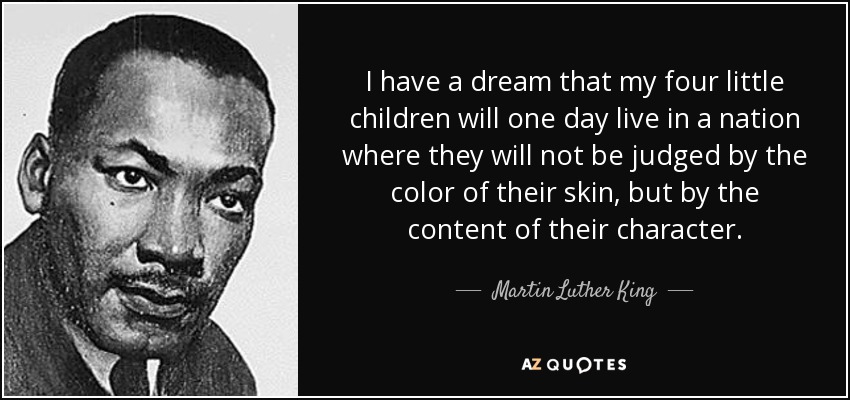Click here to return to Blog Post Intro

A Real Beginning
Abraham Lincoln often slipped out of the White House on Wednesday evenings to listen to the sermons of Dr. Finnes Gurley at New York Avenue Presbyterian Church. He generally preferred to come and go unnoticed. So, when Dr. Gurley knew the President was coming, he left his study door open.
During one particular walk home, an aide asked Mr. Lincoln his appraisal of the sermon. The President thoughtfully replied, “The content was excellent; he delivered with elegance; he obviously put work into the message.”
“Then you thought it was an excellent sermon?” questioned the aide. “No,” Lincoln answered.
“But you said that the content was excellent. It was delivered with eloquence, and it showed how hard he worked,” the aide pressed. “That’s true,” Lincoln said, “But Dr. Gurley forgot the most important ingredient. He forgot to ask us to do something great.”
There is nothing wrong with average lives and average accomplishments; most of the good of the world builds on the accumulated efforts of everyday people. But a life should strive for greatness, as Lincoln seemed to know.
One day an expert in time management was speaking to a group. He pulled out a one-gallon, wide-mouthed jar and set it on the table in front of him. He also produced about a dozen fist-sized rocks and carefully placed them, one at a time, into the jar. When the jar was filled to the top and no more rocks would fit inside, he asked, “Is this jar full?” Everyone said yes.
He then reached under the table and pulled out a bucket of gravel. He dumped some gravel in and shook the jar, causing pieces of gravel to work themselves down into the spaces between the rocks. He then asked the group once more, “Is the jar full?” But this time some of the group were not so sure.
“Good,” he said as he reached under the table and brought out a bucket of sand and dumped it in the jar. Once more he asked the question, “Is the jar full?” No one answered. He then grabbed a pitcher of water and poured it in until the jar was filled to the brim. He looked at the class and asked, “What’s the point of this illustration?” One bright young man said, “The point is, no matter how full your schedule is, if you really think about it, you can always fit more things in it.”
“No,” the speaker replied with a smile. “That’s not the point. That’s what most people think. The truth this illustration teaches is that if you don’t put the big rocks in first, you’ll never get them in at all.” What are the big rocks in your life? Time with your loved ones, your dreams, your health, a worthy cause? Remember to put these in first, or you’ll never get them in at all.
What Is Vision, Anyway?
Full steam ahead means being so clear about your purpose, so committed to it, and so sure about your ability to accomplish it that you move ahead decisively despite any obstacles.
Many leaders focus on establishing a well-run, operationally solid, financially sound organization. They miss the importance of creating a shared vision. Being a good manager is not enough. Leadership is about going somewhere.
The development of the steam engine made modern industry possible. Until then, people had to rely on their own muscles, the wind, or animals such as horses for power. One steam engine could do the work of hundreds of horses. It could supply all the power needed to run the machines in a factory. A steam locomotive could haul thousands of tons of freight. Steamships provided fast, dependable transportation. Full steam ahead best describes the transformative power unleashed by vision.
Element 1: Significant Purpose
Purpose means a clear understanding of what we are here for, why we exist. Purpose means understanding what business we are really in so that we all can focus our efforts in support of that purpose.
There are a lot of mission statements and lots of opinions on how to write them, but not much agreement or consistency on what actually makes a mission statement work in terms of defining the purpose of a business.
When Walt Disney started his theme parks, he declared they were in the “happiness business.” Google’s website says their mission is “To organize the world’s information and make it universally accessible and useful.” It’s short, clear, and specific.
A good purpose statement needs to explain “why,” and it needs to “serve a greater good.” The meaning of the statement is important—and not simply what it says. The best words in the world would be meaningless if they meant nothing to the people in the organization. Unfortunately, most purpose and mission statements usually just describe the products and services the company provides at best and at worst are a meaningless collection of platitudes.
Purpose
- Purpose is your organization’s reason for existence.
- It answers the question “Why?” rather than just explaining what you do.
- It clarifies—from your customers’ viewpoint—what business you are really in.
- Great organizations have a deep and noble sense of purpose—a significant purpose—that inspires excitement and commitment.
- The words themselves are not as important as their meaning to the people.
Element 2: Picture of the Future
A picture of the future shows where you’re going. Here’s an example of the power of creating a picture of what you want to achieve. In the 1976 Olympics, the Soviet athletes walked away with almost all the gold medals. They won more gold than any other country, even in events they weren’t expected to win. Everyone was absolutely stunned.
The key to their success was that their sports training had involved a technique called mental rehearsal, where the athletes visualized their performance during the competition. Today this technique is commonly used in sports training. At that time, it was very new, and the results were remarkable.
The power of a picture works when you focus on what you want to create, not what you want to get rid of. In other words, be proactive, not reactive.
Many are deeply moved by the vision articulated by Martin Luther King, Jr. in his “I Have a Dream” speech. Dr. King’s pictures were only of the end result, not the process of achieving it. He had left it up to us to figure out how to achieve the end result.
Walt Disney’s picture of the future for his theme parks was expressed in the charge he gave every cast member: “Keep the same smile on people’s faces when they leave the park as when they entered.”
Picture of the Future
- A picture of the end result, something you can actually see, not vague
- Focus on what you want to create, not what you want to get rid of.
- Focus on the end result, not the process for getting there.
Element 3: Clear Values
A value is a belief or ideal or the quality of a thing that makes it wanted or desirable (e.g., the value of true friendship). Values are more than just beliefs—they are deeply held. People care passionately about their values. We all feel good when we act on our values.
Values are deeply held beliefs that certain qualities are desirable. They define what is right or fundamentally important to each of us. They provide guidelines for our choices and actions. If purpose is important because it explains “why,” and a picture of the future is important because it indicates “where,” then values are important because they explain “how.” They answer the question “How will you behave on a day-by-day basis as you fulfill your purpose and move toward your picture of the future?”
On the same page as Google’s mission was its philosophy of “Ten Things,” which articulated their values.
Southwest Airlines (see my post on Lead with Luv – The Southwest Airlines Way) also provides a good example. Its site says, “We’re in the customer service business. We happen to fly airplanes.” The desired result they wanted was that “every American has the ‘Freedom to Fly’—to be with friends, business associates, or relatives on happy occasions as well as sad ones.” And finally, the values that guide its behavior on a daily basis were Safety, a Warrior Spirit, a Servant’s Heart, and a Fun-LUVing attitude.
With these companies, three things stand out about their values:
- The values they chose supported their purpose and picture of the future.
- They only had a few values—usually four to five.
- The values often appeared to be rank ordered.
Most people cannot focus on more than four or five values that really impact behavior. Values are most effective when they are rank ordered, so that when value conflicts arise, people know which value they should focus on.
Not only are values important for helping a company move “full steam ahead,” but also that not continuing to act on its values can negatively affect its image and profits.
Purpose tells why. Picture of the future tells where. Values tell how. Shared values help people behave consistently.
Values
- Values provide broad guidelines on how you should proceed as you pursue your purpose and picture of the future.
- They answer the questions “What do I want to live by?” and “How?”
- They need to be few in number and rank ordered in importance.
- They need to be clearly described so you know exactly the behaviors that demonstrate that the value is being lived.
- They need to be consistently acted on, or they are only “good intentions.”
- People’s personal values need to be in line with the values of the organization.
Vision Defined
Vision is knowing who you are (Significant Purpose), where you are going (A Picture of the Future), and what will guide your journey (Clear Values).
In the Apollo Moon Project (see my Post on Leadership and Life Lessons from the Space Program), NASA certainly had a clear picture of the end result, even though the process to achieve it was not clear. The picture focused NASA’s energy, and its people accomplished amazing results—all because of the powerful picture of the future. But since that time, they have never re-created that energy or momentum. The power ended.
Unfortunately, the underlying purpose was never clearly agreed on. Why were we doing it? Were we doing it to win the space race, to begin the Star Wars space defense initiative, or in the spirit of Star Trek “to boldly go where no one has gone before”? And because there was no significant purpose, there was nothing to guide future decisions. NASA has shown neither clear direction nor outstanding performance since.
So, the Apollo Moon Project was not a vision—it was a goal with a powerful picture of the future. A vision is enduring and continues to provide guidance as goals are achieved.
Test of a Compelling Vision
- Helps us understand what business we’re really in
- Provides a picture of the desired future that we can actually see
- Provides guidelines that help us make daily decisions
- Is enduring
- Is about being “great”—not solely about beating the competition
- Is inspiring—not expressed solely in numbers
- Touches the hearts and spirits of everyone
- Helps each person see how he or she can contribute
Blurry Vision
You can’t get to the future without being present. Both views are important: a clear vision for the future and an honest, realistic view of the present.
Doing both—focusing on your vision and being honest about the truth of your present situation—is what allows you to move full steam ahead.
At times, the tension of holding an honest view of both your present and your vision is frightening. It feels like jumping off a cliff with no assurance of a safe landing.
Learn from the past, plan for the future, and live in the present. In other words: Live your vision now.
20/20 Vision: Company, Team, and Personal Visions
You don’t have to wait for the company to have a vision. Vision can start anywhere.
Try the Three Whys Technique to identify your values:
- What do I really value and why?
- When I get down to the core, what really matters most to me and why?
- What is absolutely essential to who I am? What do I stand for?
From Vision to Reality: The Three Hows
Vision is a lot more than putting a plaque on the wall. A real vision is lived, not framed.
1. How It’s Created
It’s your job as the leader to ensure there’s a shared vision, to champion the vision, but not to own the vision. Everyone in the organization must own the vision. Otherwise, it’s just your vision and not a shared vision. The more involved people are in creating it, the more they will feel a sense of ownership—then it’s not just your vision; it’s everyone’s vision.
The team-developed vision is better than what you can come up with on your own. When you allow others to be involved in shaping the vision, they bring a wider range of perspectives that enrich the vision. The different perspectives add depth, and you can all learned a lot from each other and develop more respect and appreciation for each other in the process.
In fact, the process of creating the vision is as important as what the vision says. By involving the team in clarifying your organization’s purpose, picture of the future, and values—rather than presenting those to them—more and more people will become honestly engaged.
2. How It’s Communicated
When people lose sight of the vision or stop acting in concert with it, the rallying call becomes meaningless and actually turns people off. A rallying call needs to speak to the people in the organization to help them remember the vision—not just be solely a marketing message.
Here’s a good one: Ritz-Carlton’s “We are ladies and gentlemen serving ladies and gentlemen.” Another good one is Steve Jobs’ vision to make computers accessible and affordable for everyone by creating a world with “a computer on every desk.”
How important is it to create a rallying call? It’s a “nice to have” but not a “necessary to have.”
Vision shouldn’t be a one-time activity. Visioning is an ongoing process; you need to keep talking about it. It’s so easy for leaders to fall into the trap of thinking that their people should be focused on them and what they want. When you have a shared vision, the leader becomes a servant of the vision, not an important leader who needs to be served.
When you shift from a self-oriented perspective, it changes the way you think about leadership. From this viewpoint, leadership is about serving the greater good. There is no room for ego-driven leadership.
There are a number of important roles for leaders. One of your jobs is to remind people about what’s really important. Another is to help them stay focused on the vision. Another is to remove obstacles whenever possible. And another is to encourage them to act and cheer them on.
3. How It’s Lived
This is where the rubber meets the road. How is your vision lived on a daily basis? There is no doubt that once you identify your vision, you have to start living it immediately and behaving consistently with the intention of that vision.
Ignoring the behavior of those who act inconsistently with the vision threatens the trust and commitment of the rest of the team. A high-performing team shares leadership and responsibility for prioritizing projects, coordinating efforts, and solving problems.
Steps to Making Your Vision a Reality
- Create a vision that illuminates purpose, a picture of the future, and values.
- Honestly assess your current situation, and be willing to live with the creative tension.
- Create supporting structures that are aligned with the vision.
- Set goals and action plans.
Staying the Course
As a leader, your people need to believe you are serious about the vision. If you’ve ignored some long-standing problems, you might need to start by acknowledging the truth of the current realities, and maybe even take some action toward resolution before expecting people to trust your leadership enough to genuinely embark on the process of creating a shared vision.
Sailing provides a good example. When you’re sailing on a lake, you keep your eye on your destination, but you don’t point the boat directly at it. You want to catch the best wind to increase your speed. So, you get to your destination by tacking—making a series of turns as you head toward your destination. You need to prepare for sudden shifts in the wind and be ready to change direction quickly, or your boat can tip. If you think of the destination as your vision, then tacking is when you set new goals.

When you do your annual goal setting, it should be in the context of your vision. And if something unexpected comes up midyear and you get knocked off course, you need to revisit your goals.
From Success to Significance
Living the values is as important as delivering business results.
The challenge is to discover what it means to move from success to significance. On this planet, we are all part of one community; we all need to assume responsibility for creating a shared vision. If your vision is only about yourself and getting what you want, you are too narrowly focused. Ultimately, you may be successful in achieving your goals, but true satisfaction comes from having a significant impact and making a contribution.
In moving from success to significance, the vision must benefit everyone it touches.
People have asked Blanchard whether Hitler had a vision. Blachard responds, “He was not aligned with the principles of vision as I describe them. But he had a charismatic personality and articulated a compelling image to those who would benefit from it. Unfortunately, it was at the expense of those it did not include and, as a result, millions suffered horribly.”
Because the images we hold have the potential to manifest, we have a responsibility to take them seriously and to consider the larger community that is touched by our vision.
Creating Your Own Vision: Guidelines and Application

The Game Plan
The action steps described here are useful for teams such as:
- Create a Shared Vision: Have individuals and then the group reflect and agree on the fundamentals for each of the three key elements of a compelling vision. Agree on what is essential, but do not finalize the wording at this point, as it is important to be open to feedback from others outside the group.
- Honestly Describe the Current Reality: Examine your current realities in relation to your vision. Identify the strengths and weaknesses of your group in relation to your ability to achieve your vision. Develop plans for collecting additional information or verifying current perceptions. Understand the importance of the creative tension generated by holding the vision and being honest about the present.
- Develop Strategies to Move Forward: Identify the greatest opportunities to leapfrog forward. Identify what supporting structures are needed. Develop bridging strategies to guide your movement forward. Also identify, and if possible make decisions on, “low-hanging fruit”—obvious problems that can easily be resolved without large repercussions. This demonstrates commitment to action.
- Plan for Involvement and Communication: Develop a plan to communicate the results of this meeting and to involve the rest of your department or organization in shaping the vision. Identify roadblocks and develop specific plans for action, including ongoing communications. If it is not possible to gather everyone at the same time, other processes can be used, such as holding a series of cross-company meetings. Whatever process is used to communicate the vision, the communication channels should remain open by engaging in a two-way process where the results of the discussions flow back to the senior leaders, who in turn then communicate their responses.
- Make Personal Commitments: Have individuals make personal commitments to specific goals and actions that demonstrate they are living and modeling the vision right now, even as they continue developing the vision.
Are you ready to unleash the power of vision in your work and your life, as you shoot for the stars?



